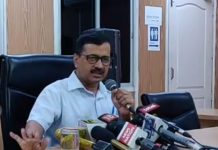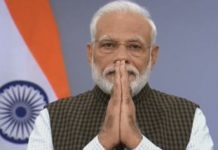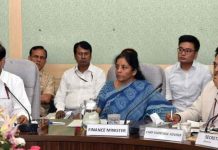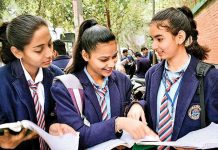 The onset of November, usually marked by pleasant weather, saw the national capital battling a three-pronged attack in the form of surge in Covid-19 cases and deaths, dip in temperatures and rise in air pollution levels.
The onset of November, usually marked by pleasant weather, saw the national capital battling a three-pronged attack in the form of surge in Covid-19 cases and deaths, dip in temperatures and rise in air pollution levels.
A key factor behind the surge was the October-November festive season which saw a huge rush of residents to the city markets throwing caution to the wind.
Besides the shopping super-spreading events, opening up of offices and factories earlier as part of the unlock process and a general slackness among the people in following safety protocols sent the number of Covid-positive cases soaring in Delhi and exposed the claims of the Arvind Kejriwal government in dealing with the health emergency.
The annual smog over the NCR region due to the burning of crop residuals in the fields by the farmers of Punjab and Haryana further choked Delhi residents and contributed significantly to the pandemic cases.
As infected persons flooded the hospitals, the number of ICU beds fell short putting the people at the mercy of a callous system.
A perplexed Delhi government, which was pulled up by the Delhi High Court over its poor handling of the surge, hurriedly declared the phase as the third wave of the pandemic ringing alarm bells in the central government which assured to arrange more ICU beds and made plans to fly in doctors from outside.
In a sharp rebuke, the high court wondered why the Delhi government sat for 18 days as the pandemic cases peaked and precious lives were lost. It was felt that the penalty for not maintaining social distancing at 500 and 1,000 for each subsequent violation, was not working.
Pointing out that December could be worse, the Supreme Court of India took suo motu notice of the situation and sought status reports from the centre on preparedness of the governments in Delhi, Gujarat, Maharashtra and Assam where a spike in Covid-19 cases was registered.
Earlier, the peak in Covid-19 cases across India had come in June and again in September when around 95,000 new cases per day were being recorded after which a downward trend had started bringing the tally down to around 40,000 new cases per day.
But the worst figures came in November. In Delhi on Nov 19 as many as 7,546 new cases and 98 deaths were reported, taking the total toll to around 8,000.
Before that on Nov 11, the highest number of new cases 8,593 per day was reported and the average that weekremained at 7,000 new cases per day. On Nov 18, as any as 131 deaths, the highest so far, were reported in the national capital.
Delhi has crossed 5.3 lakh cases with 8,391 deaths. The death rate was 1.58 percent while the recovery rate was 89.9 percent.
As the centre ordered a fresh house to house survey, the Delhi government claimed active contact tracing and increased testing were behind the recent spike but experts had countered the view.
In fact, the experts had been warning of such a spike during the festive season October-November when per day new cases were 5,000 but the November figures surprised the authorities.
The main question for them was why only Delhi was recording a surge in new cases when the festive season had been observed across the country.
Going by the epidemiologists, the Coronavirus was now moving from the poor, who had little option but to go out and work, to well-off sections of society in Delhi.
The surge in other cities was less, some experts said.
Delhi seropositivity, indicating the percentage of population affected, was high at 25.5 percent while Mumbai was 33 percent in October down from 40 percent in June, Chennai was 32 percent in October up from 21.5 percent in July.
 Another worry for the doctors in Delhi was that the Covid-19 cases in November were coming with more complications due to comorbidities and the patients were taking longer to get discharged.
Another worry for the doctors in Delhi was that the Covid-19 cases in November were coming with more complications due to comorbidities and the patients were taking longer to get discharged.
This, in turn, created pressure on the health care system and contributed to the shortage of ICU beds. Media reports showed harrowing tales how people had to run from pillar to post to get a hospital bed while the government apps claimed otherwise.
On top of that while the conditions at the government hospitals were far from satisfactory, those who opted for the private hospitals got fleeced with heavy bills in the process.
To deal with the situation, the Delhi government ordered 90 percent private hospitals to reserve 60 percent of total beds for Covid patients.
In another comparison, while most of the patients in June were above 55 years, a significant number of persons between 25-45 years were getting infected with Coronavirus.
So while the fatality rate had been lower in November than in June due to better understanding among the doctors on how to treat the positive patients, there were concerns that the longer duration of infection in the body could impact the other vital organs.
How the states responded?
The states imposed curbs to deal with the surge in covid-19 numbers. Delhi increased the penalty for not wearing a face mask in public from 500 to 2,000 and restricted participation of 50 persons at weddings.
Haryana imposed night curfew, Rajasthan imposed Sec 144 of CrPC barring gathering of five or more persons in 33 districts till Dec 20. Himachal Pradesh imposed night curfew in four districts, allowed only 100 persons at weddings and asked people over 60 years and children below 10 years besides pregnant women to stay at home.
Uttar Pradesh issued an alert and asked people to stay indoors, while Maharashtra shut down schools till Dec 31 to check the second wave of Covid-19, made RT-PCR test mandatory for all those arriving from Delhi and Gujarat and even considered banning flights and trains from the national capital.
Madhya Pradesh and Gujarat imposed night curfew in 5 districts each to deal with the situation.
When will the vaccine come?
India is the second most Covid-19 hit country after the US with over 9.1 million cases and 1.3 lakh deaths. The message from the Delhi surge was loud and clear — the pandemic is far from over and strict safety protocols including wearing a face mask, washing the hands regularly and maintaining social distancing — would have to be followed by all till a vaccine was available. According to the experts, that stage may come in April next year.
Another company AstraZeneca working with Oxford University and the Serum Institute of India (SII) has claimed its vaccine AZD 1222 has 70 percent efficacy in one type of dose regimen and 90 percent in another type of dosage regimen and can be stored at fridge temperature.
SII CEO Adar Poonawalla said as many as 100 million doses of the vaccine Covishield will be available in India by January 2021.
The vaccine will cost 250 per dose to the central government which will buy 90 percent of the doses and 1,000 per dose to the pharmacies.
Indian firm Bharat Biotech is also working on its own vaccine for which phase 3 trials have started. India needs a vaccine which is affordable and has long-term protection against the Covid-19. It also needs a plan to make the vaccine available to the people priority wise.
US-based pharmaceutical giant Pfizer and Germany’s BioNTech have claimed their Covid-19 vaccine has 95 percent efficacy. Pfizer has applied to the US Food and Drug Administration for emergency use of its vaccine.
The US authorities hope they should be able to start the vaccination by mid December and cover 20 million people by month end followed by around 30 million people per month.
But the vaccines being developed by Pfizer/BioNtech need to be stored at very low temperatures (-75 degree Celcius) and are therefore unsuitable for developing countries like India where such facilities are not available.
Another drug manufacturer Moderna has claimed its vaccine mRNA-1273 has 95 percent efficacy and is stable at 2-8 degree Celcius temperature.
letters@tehelka.com













